new posts in all blogs
Viewing: Blog Posts Tagged with: science news, Most Recent at Top [Help]
Results 1 - 4 of 4
How to use this Page
You are viewing the most recent posts tagged with the words: science news in the JacketFlap blog reader. What is a tag? Think of a tag as a keyword or category label. Tags can both help you find posts on JacketFlap.com as well as provide an easy way for you to "remember" and classify posts for later recall. Try adding a tag yourself by clicking "Add a tag" below a post's header. Scroll down through the list of Recent Posts in the left column and click on a post title that sounds interesting. You can view all posts from a specific blog by clicking the Blog name in the right column, or you can click a 'More Posts from this Blog' link in any individual post.
By: Arbordale Publishing,
on 12/7/2015
Blog:
(
Login to Add to MyJacketFlap)
JacketFlap tags:
Children's Books,
penguins,
educational books,
staying warm,
emperor penguin,
Science and World News,
science news,
Arbordale Posts,
penguin kids books,
Add a tag
 When you live in Antarctica and wear a tuxedo it is a group activity to keep warm on a cold winter day. Scientists have documented that emperor penguins form huddles to stay warm in the frigid temperatures of this habitat.
When you live in Antarctica and wear a tuxedo it is a group activity to keep warm on a cold winter day. Scientists have documented that emperor penguins form huddles to stay warm in the frigid temperatures of this habitat.
The penguins have a sophisticated system of rotation to make sure that no one gets too cold, but by studying the Pointe Géologie Archipelago colony researchers have found that huddles are sometimes very short-lived activities for the birds.
When the cold sets in or the wind kicks up, the birds seek out a huddle. The temperatures in the huddle can become much higher than the birds comfort level and researchers first believed that the huddles would break up from the center, but after spending years observing these animals they found that one single bird leaving from the outside can break up a huddle.
While scientists may have originally thought huddles were a simple process in the penguin lifestyle, there is much more that can be learned from the way that these birds socially regulate their temperatures.
Read the article: A Single Penguin can break up a huddle!
To learn more about penguins here are some great stories to share with your little ones:
 The Penguin Lady
The Penguin Lady
by Carol A Cole, illus. by Sherry Rogers
Penelope Parker lives with penguins! Short ones, tall ones; young and old—the penguins are from all over the Southern Hemisphere including some that live near the equator! Do the penguin antics prove too much for her to handle? Children count and then compare and contrast the different penguin species as they learn geography.
 Polar Bears and Penguins: A Compare and Contrast Book
Polar Bears and Penguins: A Compare and Contrast Book
by Katharine Hall
Polar bears and penguins may like cold weather but they live at opposite ends of the Earth. What do these animals have in common and how are they different? You might see them near each other at a zoo but they would never be found in the same habitats in the wild. Compare and contrast these polar animals through stunning photographs.


By: Arbordale Publishing,
on 9/29/2015
Blog:
(
Login to Add to MyJacketFlap)
JacketFlap tags:
Sounds of the Savanna,
book recomendation,
giraffe noise,
The Giraffe Who Was Afraid of Heights,
kids books,
Educational,
giraffe,
Teaching moments,
Featured Books,
science news,
Add a tag
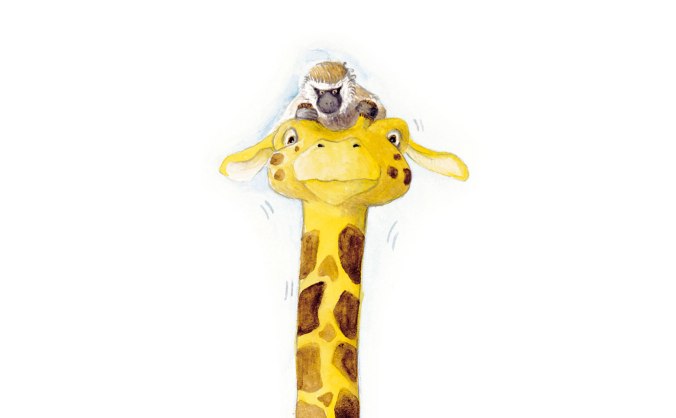
Did you know that giraffes, often a very quiet animal, hum in their sleep late at night? Zookeepers involved in the study were even surprised that researchers picked up a low humming noise from their giraffes.
Researchers spent hundreds of hours recording sounds in the giraffe’s enclosures and in each zoo at least one giraffe was separated from the herd.
Although the sound recordings tell us that giraffes do have more vocalization than the grunts and sneezes that keepers hear during the day, now scientists may go further to understand if this is a communication method or if it is involuntary like snoring or talking in your sleep.
Hear the giraffe’s hum and learn more about the study here.
Do you want to learn more about giraffes, or animal sounds? Here are two Arbordale books that would be a great start on the topic!
The Giraffe Who was Afraid of Heights
 Imagine if the one thing that keeps you safe is what you fear the most. This enchanting story tells of a giraffe who suffers from the fear of heights. His parents worry about his safety and send him to the village doctor for treatment. Along the way he befriends a monkey who is afraid of climbing trees and a hippo who is afraid of water. A life-threatening event causes the three friends to face and overcome each of their fears. The “For Creative Minds” section includes fun facts and animal adaptation information, a match-the-feet game and a mix-n-match activity.
Imagine if the one thing that keeps you safe is what you fear the most. This enchanting story tells of a giraffe who suffers from the fear of heights. His parents worry about his safety and send him to the village doctor for treatment. Along the way he befriends a monkey who is afraid of climbing trees and a hippo who is afraid of water. A life-threatening event causes the three friends to face and overcome each of their fears. The “For Creative Minds” section includes fun facts and animal adaptation information, a match-the-feet game and a mix-n-match activity.
Sounds of the Savanna
 From the first light of dawn until the sun sets at night, the savanna is alive with noise. A lion roars in the early morning, a young baboon shrieks to warn others of danger at noon, and a young mouse squeals at dusk. What are the animals saying and why? Animals communicate in many ways; explore the thriving African savanna as its inhabitants “talk” to one another throughout the course of a day.
From the first light of dawn until the sun sets at night, the savanna is alive with noise. A lion roars in the early morning, a young baboon shrieks to warn others of danger at noon, and a young mouse squeals at dusk. What are the animals saying and why? Animals communicate in many ways; explore the thriving African savanna as its inhabitants “talk” to one another throughout the course of a day.
And…Look forward to next year when we see what really happens at night in the zoo! Midnight Madness at the Zoo coming February 2016!
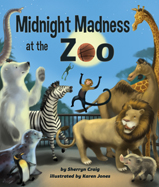


By: Arbordale Publishing,
on 5/29/2015
Blog:
(
Login to Add to MyJacketFlap)
JacketFlap tags:
day in the deep,
light adaptations,
ocean hide and seek,
animals,
science books,
Educational,
octopus,
octavia,
Featured Books,
Science and World News,
science news,
Add a tag

One amazingly interesting creature is the octopus; this cephalopod can twist and turn its body into many shapes, suction to all types of surfaces, and use a cloud of ink to distract predators. This week, researchers uncovered the California two-spot octopus’s ability to sense light through its skin.
When the scientist shone a beam of light on the skin of an octopus the chromatophores (pigmented structures in the skin) expanded and the skin changed color. When the light was turned off, the chromatophores contracted again and the octopus was back to its original color. Why does this happen? Scientists determined that the octopus’ skin has proteins called opsins that work with the chromatophores for this reaction to occur.
(Read more about the experiments here)
Changing colors is nothing new in the octopus species; they can become red with anger, or transparent in sunlight. The more tools the creature has to camouflage itself the better chance for survival in the wild depths of the ocean where predators are abundant.
To learn more about the octopus or how other animals use light in the depths of the ocean here is a short underwater reading list!
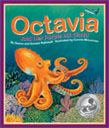
Octavia and her Purple Ink Cloud
Octavia Octopus and her sea-animal friends love playing camouflage games to practice how they would hide from a “big, hungry creature.” Octavia, however, just cannot seem to get her colors right when she tries to shoot her purple ink cloud. What happens when the big, hungry shark shows up looking for his dinner? This creative book introduces basic colors along with the camouflage techniques of various sea animals; a great introduction to marine biology!
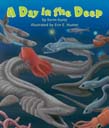 A Day in the Deep
A Day in the Deep
Travel deep into the ocean way below the surface and you’ll encounter some creatures you never knew existed! This book takes you on a journey through the dark depths of the sea towards the ocean floor. Most ecosystems need sunlight, but deep in the ocean where the sun doesn’t shine animals have adapted some very interesting ways to see, protect themselves, and eat. Discover the unique habitats, adaptations, and food chains of these deep -sea creatures.
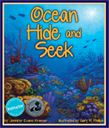 Ocean Hide and Seek
Ocean Hide and Seek
The sea is a place of mystery, where animals big and small play hide and seek! Can you imagine a shark hiding in the light? What about a clownfish in plain sight? Don’t believe it? Then, sink into the deep blue sea with Jennifer Evans Kramer and Ocean Hide and Seek! Surround yourself with the vibrant ocean illustrations of Gary R. Phillips. The ocean is an old, old place, and the exotic animals in the depths have learned to adapt to their surroundings to survive. Can you find the creatures hidden on every page? Or will you, too, be fooled by an ancient, underwater disguise?



By: sylvandellpublishing,
on 9/12/2012
Blog:
Sylvan Dell Publishing's Blog
(
Login to Add to MyJacketFlap)
JacketFlap tags:
picture books,
Education,
science,
Educational,
Book Launches,
book launch,
Sylvan Dell News,
Science and World News,
science news,
west nile,
Add a tag
 What do The Most Dangerous and news reports of West Nile virus have in common, the mosquito. When Terri Fields wrote the story of a ferocious animal contest, she had no idea how topical the book would become at the release date.
What do The Most Dangerous and news reports of West Nile virus have in common, the mosquito. When Terri Fields wrote the story of a ferocious animal contest, she had no idea how topical the book would become at the release date.
With more than 1,000 cases reported in 38 states this outbreak is the largest in U.S. history according to the Center for Disease Control. Not all mosquitoes carry the West Nile virus and not everyone will show symptoms of the disease if bitten. However, it is important to protect yourself from mosquito bites, as they are proven to transmit several different diseases to humans and animals all over the world.
Even if a non West Nile mosquito bites you, they leave behind an itchy and uncomfortable bump. The best way to protect yourself from a bite is use bug spray with Deet, wear long sleeves and long pants when you are outside and eliminate any standing water in your yard.
In The Most Dangerous, children will be excited by the parade of scary animals, but they will be surprised when the tiny mosquito shows up to the contest. Although the disease is not mentioned in the book, it is a great way to kick off a conversation about West Nile and mosquitoes with kids.
Learn more about The Most Dangerous!
 Dangerous animals from all over the world gather for the Most Dangerous Animal of All Contest. Snakes, spiders, sharks . . . who will the winner be? Deadly poison, huge teeth, razor -sharp horns, and fearsome feet are just a few of the ways that animals kill. Predators mean to kill. Prey simply defend themselves. And yet, the unexpected most deadly animal doesn’t mean to harm at all!
Dangerous animals from all over the world gather for the Most Dangerous Animal of All Contest. Snakes, spiders, sharks . . . who will the winner be? Deadly poison, huge teeth, razor -sharp horns, and fearsome feet are just a few of the ways that animals kill. Predators mean to kill. Prey simply defend themselves. And yet, the unexpected most deadly animal doesn’t mean to harm at all!
Terri Fields (Burro’s Tortillas, The Most Dangerous) has written nineteen books which have garnered a number of awards including the Maud Hart Lovelace Award for Middle Grades Fiction, the Georgia Children’s Choice Award, being named to the Recommended Reading List for Chicago Public Schools, the TAYSHAS (Texas) Reading List, the Southwest Books of the Year List, and as one of the 100 Top Kid Picks in Children’s Books in Arizona. A long time desert-dweller, Ms Fields has enjoyed sharing her books with children all over the world. In addition to writing, Ms. Fields is also a educator who has been named Arizona Teacher of the Year, ING Education Innovator for Arizona, and been selected as one of the twenty teachers on the All-USA Teacher Team of the nation’s top educators. Terri Fields has worked with students in first through twelfth grades. Ms. Fields sees the world around her in terms of the wonderful stories it reveals. Visit Terri’s website http://www.terrifields.com/.
Award-winning illustrator Laura Jacques is passionate about illustrating children’s books that focus on natural history, wildlife, and environmental awareness for children. In addition to illustrating The Most Dangerous, Baby Owl’s Rescue and Whistling Wings for Sylvan Dell, she has also illustrated For the Birds: The Life of Roger Tory Peterson, Squirrel Assist, At Home in the Rain Forest, and Wildlife Refuge: A Classroom Adventure. Her books have won several honors and awards, including “NSTA-CBC Outstanding Science Trade Books for Children” sponsored by the Children’s Book Council and the “KIND Children’s Book Award” sponsored by the Association for Humane and Environmental Education, a division of the Humane Society of the United States. For more information, visit Laura’s website: http://www.laurajacques.com.
September’s Book of the Month read The Most Dangerous here http://www.sylvandellpublishing.com/index.php!


 When you live in Antarctica and wear a tuxedo it is a group activity to keep warm on a cold winter day. Scientists have documented that emperor penguins form huddles to stay warm in the frigid temperatures of this habitat.
When you live in Antarctica and wear a tuxedo it is a group activity to keep warm on a cold winter day. Scientists have documented that emperor penguins form huddles to stay warm in the frigid temperatures of this habitat. The Penguin Lady
The Penguin Lady Polar Bears and Penguins: A Compare and Contrast Book
Polar Bears and Penguins: A Compare and Contrast Book 











